Do you know what the magic behind shotguns is?
It’s the fact that for every trigger press, I fire multiple projectiles. One trigger pull could be hundreds, dozens, or eight projectiles, depending on the size of my shot.
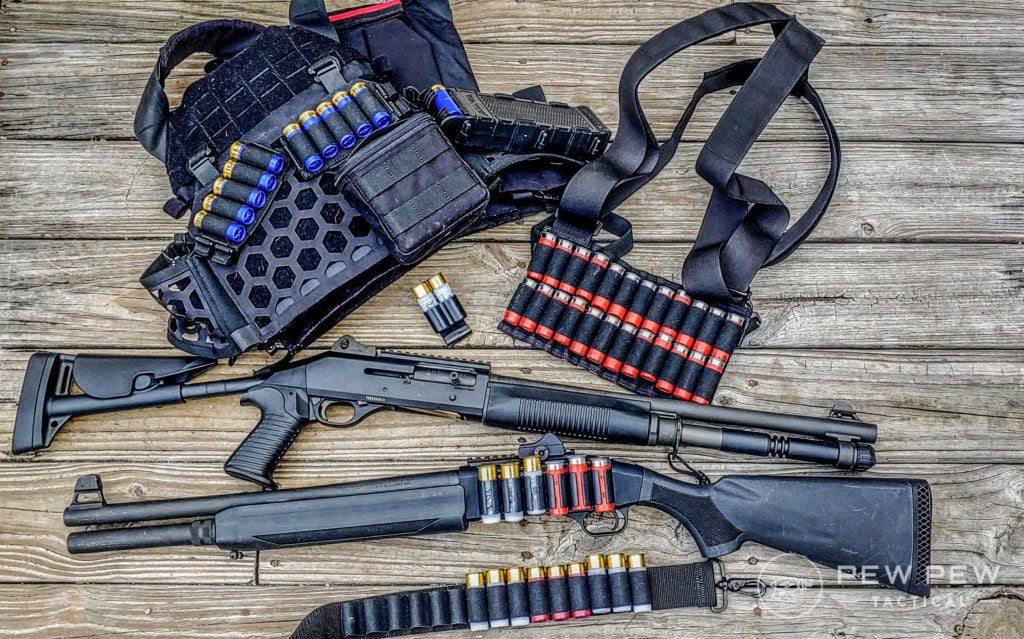
I could black out the sun with birdshot or become a deer’s worst nightmare with nine pellets of buckshot. That unique potential makes the shotgun special.
Many people like to try to make the shotgun more like a rifle, which is a mistake. Shotguns should act like shotguns, and you should embrace those loads of shot.
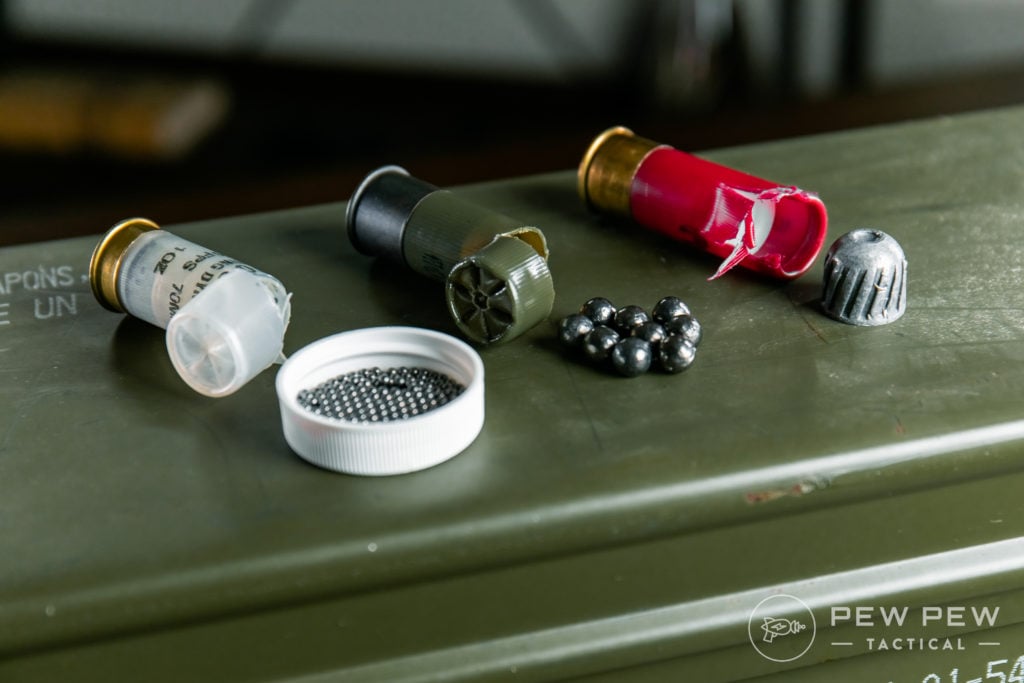
How much shot you fire per trigger pull depends on the shell’s length, its caliber, and the shot’s own size.
Those loads of shot make a ‘pattern.’ Knowing that pattern is critical to succeeding with a shotgun. We call it patterning, and it’s the most important thing you can do with a shotgun.
You need to pattern it regardless of what you use a shotgun for.
Table of Contents
Loading…
What’s Patterning?
Patterning is almost like zeroing your shotgun load, but you can’t make any windage or elevation adjustments.
Patterning is knowing how that shot will fly, how far it will fly, and how dense the pattern is as it flies at different ranges. Different tasks have different pattern requirements, but the process is the same at the end of the day.
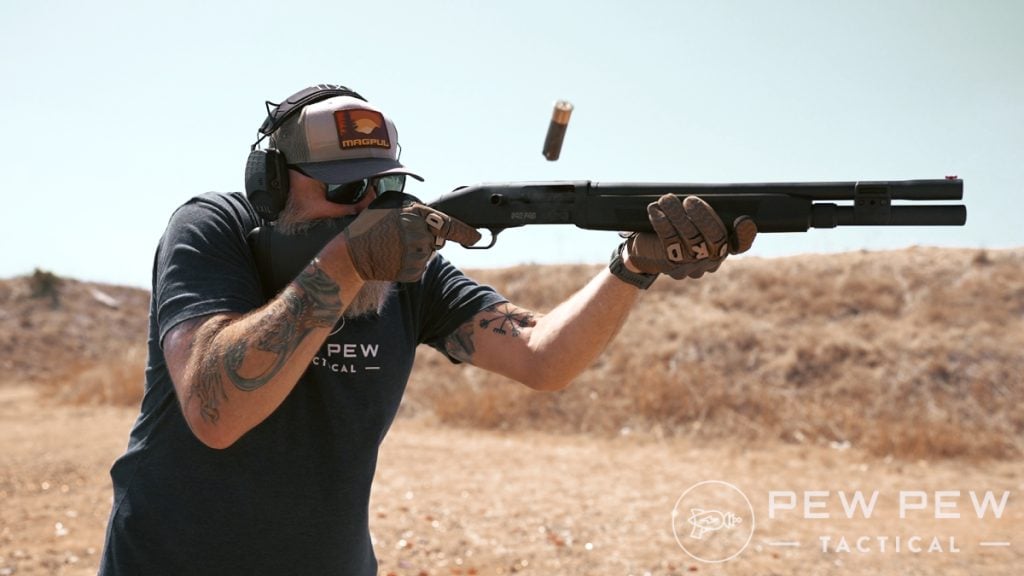
What changes are the ranges, the shot size, and the critical nature of your pattern. When I say critical nature, I’m referring to what your gun will be used for. Obviously, the pattern of a dove gun is less critical than the pattern of a defensive shotgun.
You might accept a less perfect pattern for a less critical task.
To pattern, a shotgunner takes their chosen load, their choke, and shoots a clean target. They then note how the pattern impacts the target as well as the range you are patterning at. A dense pattern means the pellets are closer together, and the less density, the further the pellets are apart.
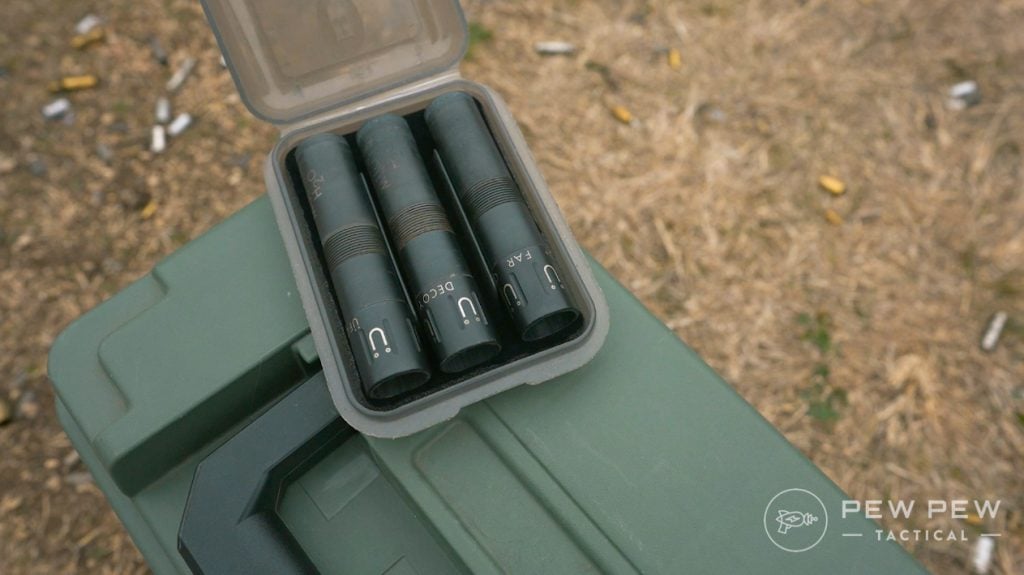
Patterns refer to the size of the pellet spread. When you shoot a rifle for accuracy, you measure the group, right? Well, shotguns are similar.
Instead of firing multiple rounds, you fire a single round and measure the distance between the pellets. That group size and shape is your pattern — most shotgun patterns are quasi-circular in nature.
A pattern tends to open up as the distance from the gun to the target increases. Patterning allows you to measure your shotgun, your chokes, and your load’s effective spread and range at various distances.
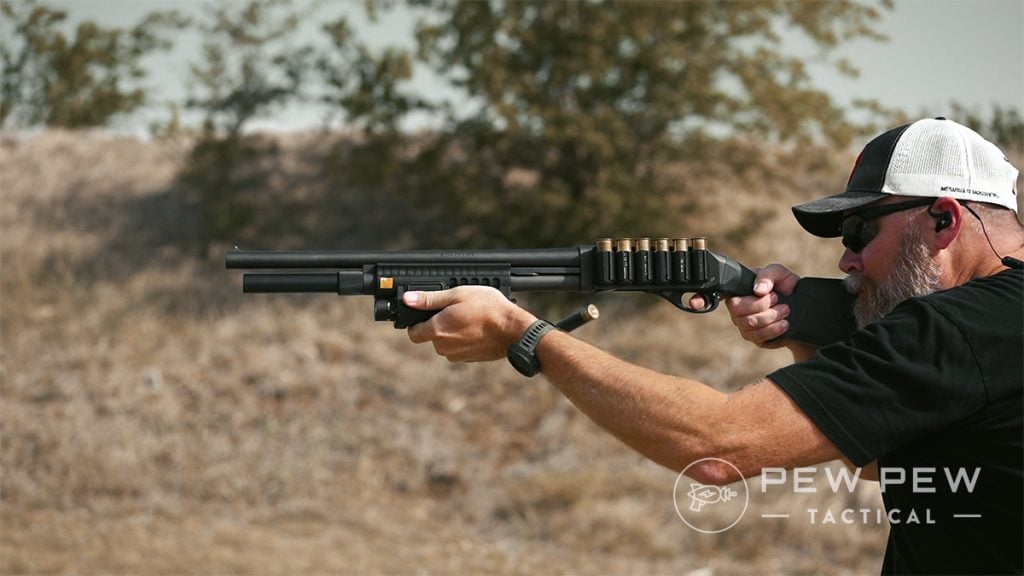
Depending on your task, you may try several different loads through your gun before you find the right one.
If you are hunting some kind of small, fast-moving game, you might want a combination of load and choke that delivers a widespread at 25 yards. If you use a shotgun for defensive tasks, you might want a tight patterning load for maximum accountability.
What Effects Patterning?
You might ask why every shotgunner needs to pattern their gun and load. Aren’t patterns the same? Can’t the box just tell me?
In a world where we can guarantee rifle and ammo accuracy to .5 MOA, you’d think shotgun patterns would be predictable.
Alas, shotgun patterns are part science, part magic — not like DnD magic, but like Gandalf style ‘subtle’ magic.

Believe it or not, I can take two identical guns, shoot the same load, and have different patterns. That’s why individual gun, choke, and load patterns are necessary.
Let’s talk about the four things that affect your pattern the most.
The Load
As you’d imagine, the spread between hundreds or dozens of birdshot pellets is substantially different than the spread between 8 pellets of 00 buck. This is true, but the pattern differences between two types of 00 buck might even be more substantial than you realize.
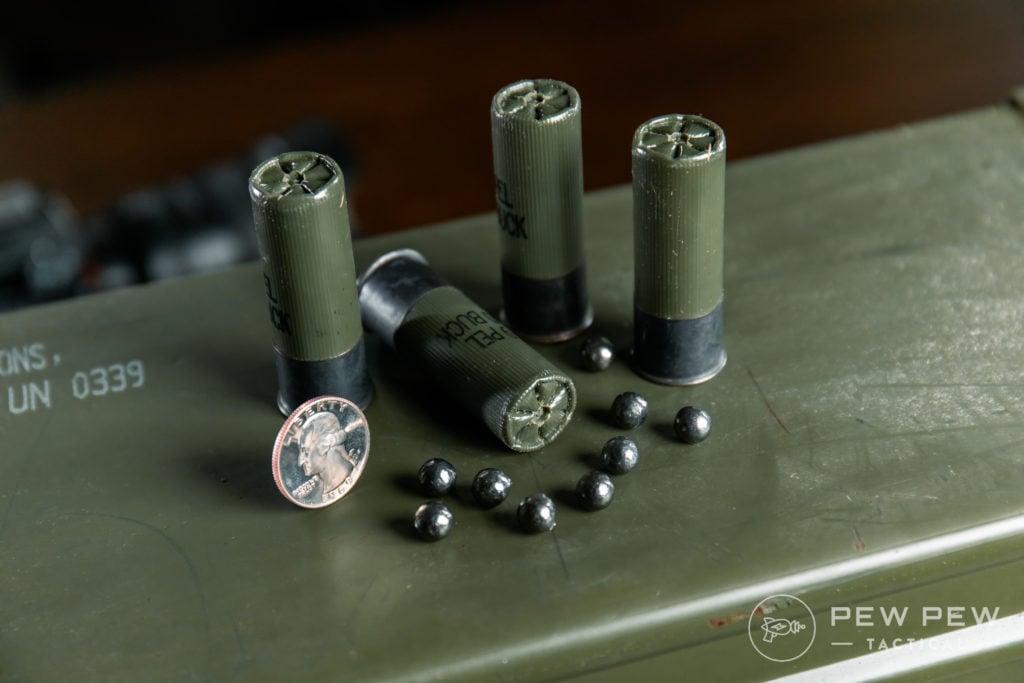
Inside a shotgun load, the number of pellets, the wad, the buffer, and even the presence of copper plating can affect how a specific load patterns. Not to mention, the velocity at which the shot is expelled from the gun can affect the pattern.
There can even be a variance between the shells in a box of ammo. It’s often slight, but that’s why it’s wise to pattern a single load at least three times at the same range. You want to know the worst possible pattern and plan for that pattern.
Check out our list of the best shotgun ammo here.
Choke
Shotgun barrels can be choked to affect the pattern. A choke is a small amount of constriction in the last few inches of the barrel that can greatly affect how the shot patterns. Chokes can tighten a load of shot or help disperse it.
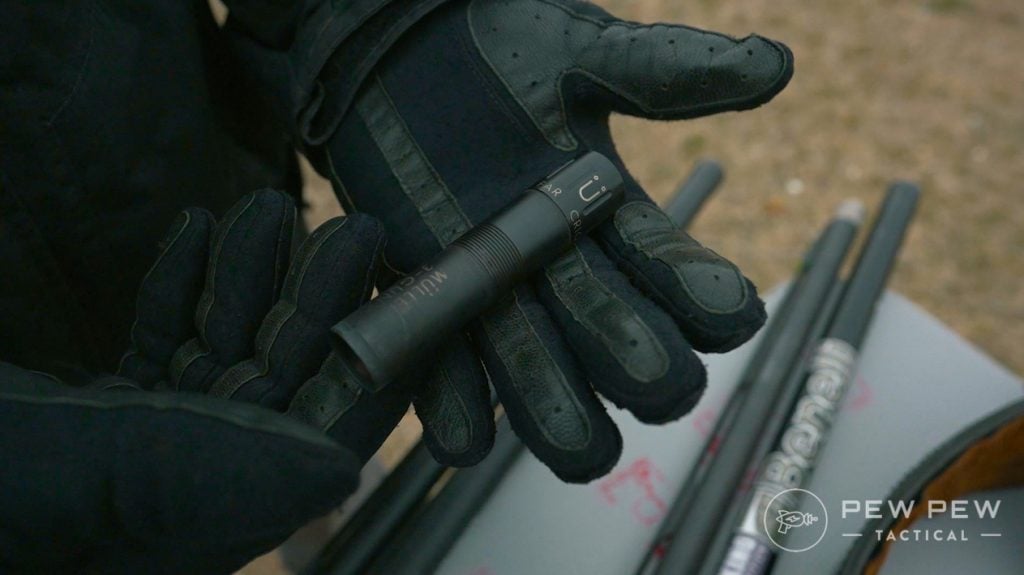
The most common chokes are cylinder, improved cylinder, modified, improved modified, and full choke. Some shotguns have built-in chokes; others allow you to swap chokes on demand. Double-barrel guns allow you to run different chokes in different barrels.
Typically, a choke tightens a pattern up and grants a longer range to the user. However, specific defensive loads like FliteControl are made to be used with a cylinder bore. Shooting these rounds through a different choke could create unpredictable patterns.
Get the lowdown on the Best Shotgun Chokes.
Shotgun Model
Different guns just pattern differently. Why exactly seems to be up for debate.
I know guns like the 590A1 tend to pattern tighter than other cylinder-bore tactical firearms. Steve Fisher of Sentinel Concept opines that it’s because of the 590A1’s barrel harmonics.
Prices accurate at time of writing
Prices accurate at time of writing
-
25% off all OAKLEY products - OAKLEY25
Copied! Visit Merchant
The barrel is thicker and has three mounts of contact with the rest of the gun instead of two due to the presence of a bayonet mount. I’ve experimented and found that the 590A1 can pattern up to 40% tighter than other cylinder-bore Mossberg shotguns.
Read some shotgun reviews and figure out what works best for you!
Environment
Yeah, temperature, humidity, and altitude can affect your pattern. If you pattern in the spring, you might be surprised to see that same gun, load, and choke combo open up a bit as the temperature drops.
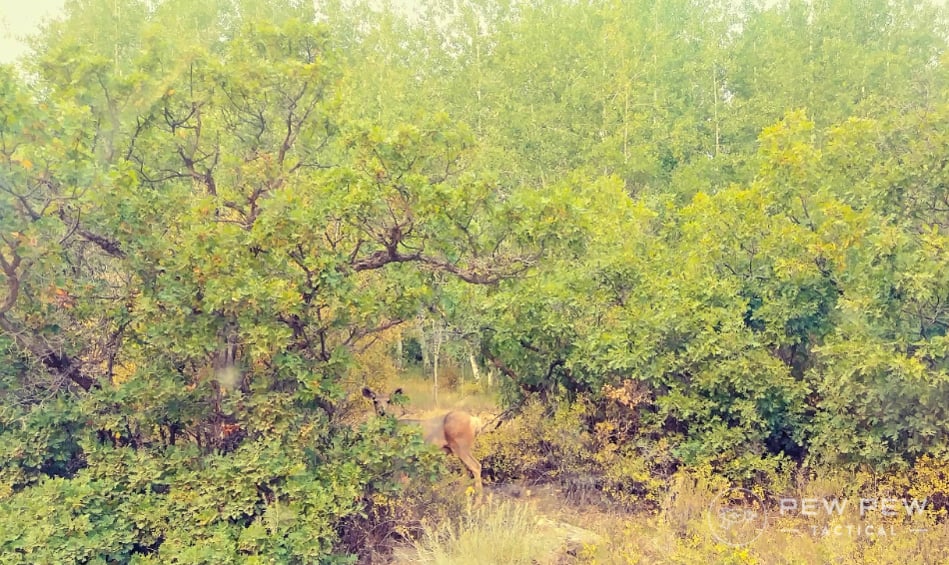
Patterning should be done at the same range you’ll be hunting in and in the same environment.
Patterning By Task
Shotguns can be used to hunt everything from birds to bears, and patterning will greatly determine your success.
Different tasks require different patterns, so you may need to experiment with loads and chokes to get the right pattern for your chosen task, range, and load.

Let’s cover some of the more basic tasks a shotgun is designed for, and we want to give you advice on how to pattern your gun for this task.
Birds & Waterfowl
Bird hunting is a classic shotgun task and one it excels at. Hitting moving targets is one of the shotgun’s strengths, and birds sure as heck like to move. When you pattern for small birds and waterfowl, you’ll want a 30-inch circle as your target.
I use a poster board and draw a big 30-inch circle on the board. If patterning for small birds like quail or pheasants, I will pattern at 25 yards. That’s where most shooters can get a little bird with ease.
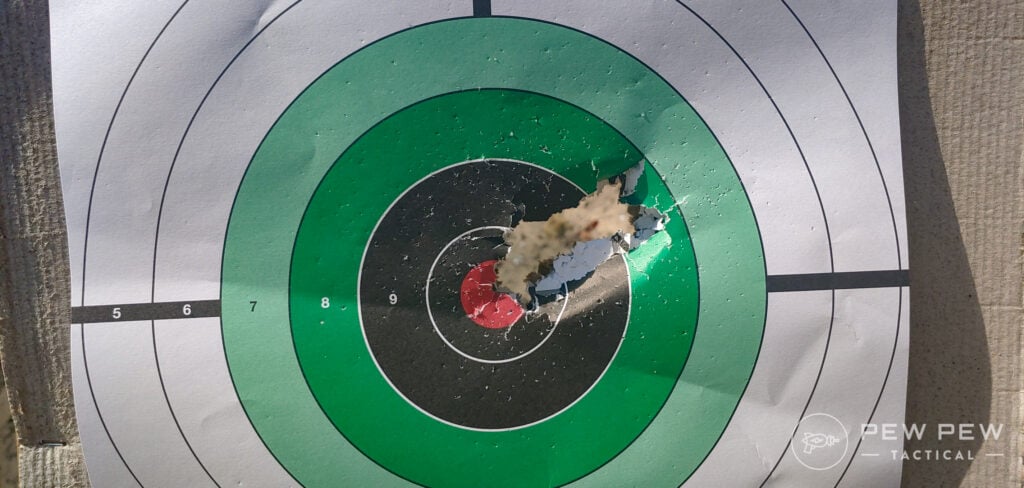
I want a pattern that puts at least 100 or so of the little pellets in that 30-inch circle. There is no need for a percentage guess with small birds. I want the pattern to be dense in the center, with pellet spread thinner as we get further from the circle.
I might pattern again at 35 yards to see if the gun, load, and choke can give me a little extra. Taking a shot at 40 yards and further is a great way to visualize too thin of a pattern.
When we hunt waterfowl, we deal with bigger birds, but we still use the 30-inch circle. As we get to bigger birds, our shot size increases, so our pellet count decreases. With bigger birds, you need to know the distance you plan to shoot.
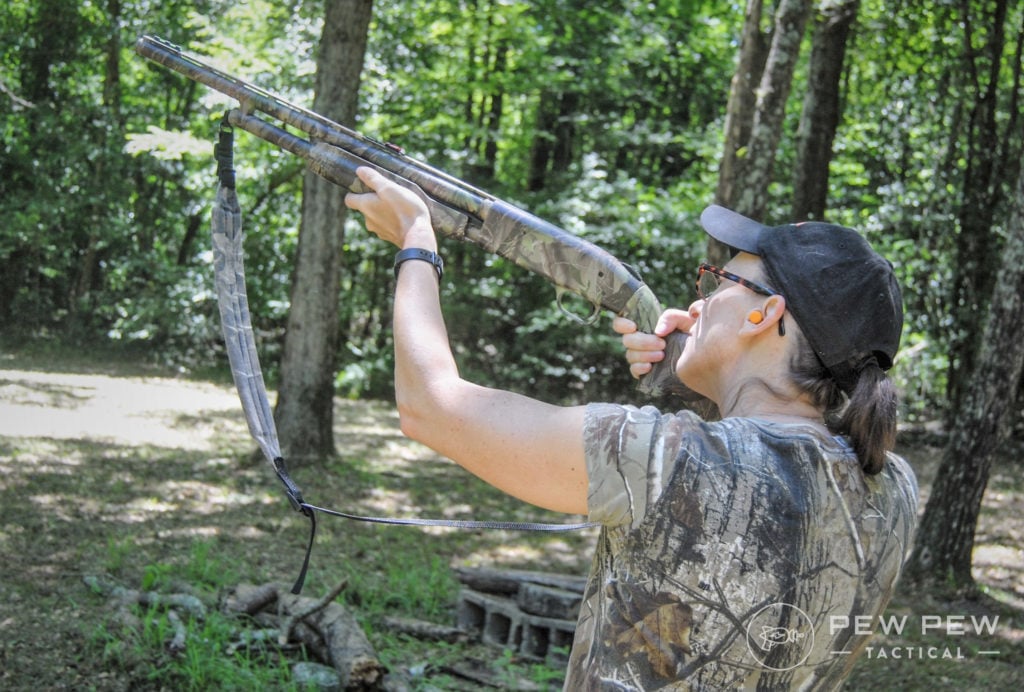
If it’s 40 yards, you want a good tight pattern and might want a tight choke and steel shot to rein things in. If you are likely to be closer to the birds, then loads like Black Cloud Close Range will work best. A tight pattern at 40 yards sounds great, but at 25 yards, the pattern is so tight you might obliterate the bird or completely miss.
Typically, you want your pattern to be as evenly distributed through the 30-inch circle as possible. It will almost always be denser in the center, but if you can fill the circle from side to side and top to bottom, you have a good pattern.
If it’s all in the center, you need to open it up. If it’s spread widely and off-target, it’s time to tighten things up. You want a minimum of 60% of your pellets in that circle at your chosen range for waterfowl. That could be 130 pellets for small ducks or 50 pellets for geese, depending on your shot size.
Turkeys
Patterning for turkeys will also involve your chosen range.
What’s the furthest shot you plan to take when turkey hunting? Most feel comfortable inside 40 yards, and most turkey shot is a tight pattern.
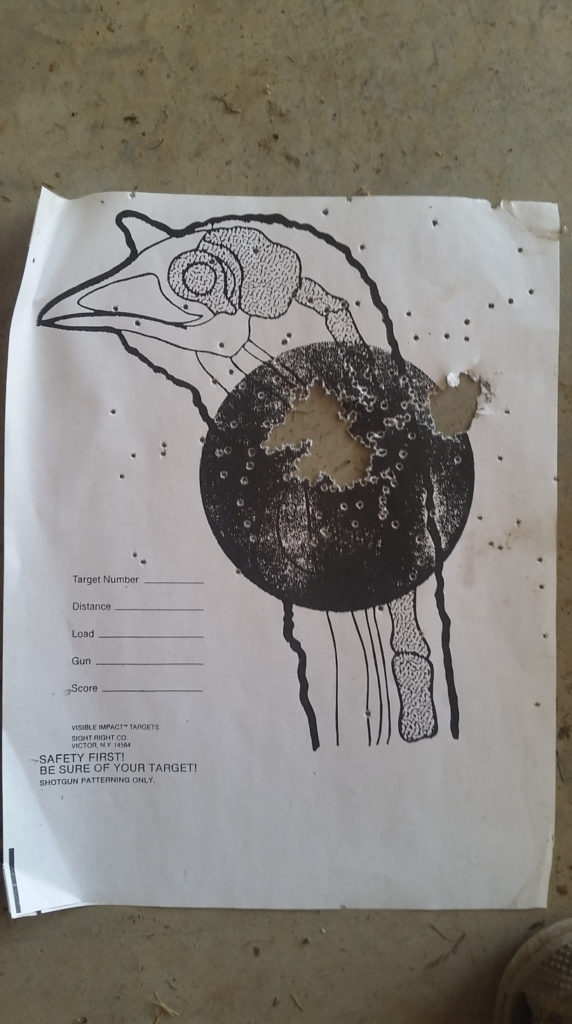
With a turkey, you are trying to score a headshot. That’s why we use an anatomically correct turkey’s head as a target.
Pattern at various ranges, and the longest range you pattern, you should land at least 20 pellets into the turkey’s head.
Medium & Large Game
As we get into deer, hogs, and even bears, our shot size typically increases to the ‘aughts.’ 00 being the most popular for deer and hogs.
Longer shells provide more pellets, and the 3-inch magnum has become very popular for the power it offers and the extra pellets.

You typically want a tight pattern on medium game because you’re not trying to shoot it while it’s flying. Unless pterodactyl hunting becomes a thing, most medium game is shot while stationary or at a slow walk. I like having a tight enough pattern to hunt at 40 yards or so.
I use anatomically correct targets for deer and hogs, with the lungs and heart being my target. If that’s not available, draw a 12-inch circle on a large piece of paper.
With the heart and lungs, I want at least five pellets in that small area. With the 12-inch circle, I want 80% of the pellets inside that circle. If I can’t achieve either goal, I tighten the pattern up with a different load or chokes.
-
25% off all OAKLEY products - OAKLEY25
Copied! Visit Merchant
Tactical Tasks
Once we go from the field to the home, there’s more to consider — where our pellets are going and where they could go.
An errant pellet has enough energy to kill a person, so if you decide to use a shotgun for home defense or duty, you will be fully accountable for each pellet fired.
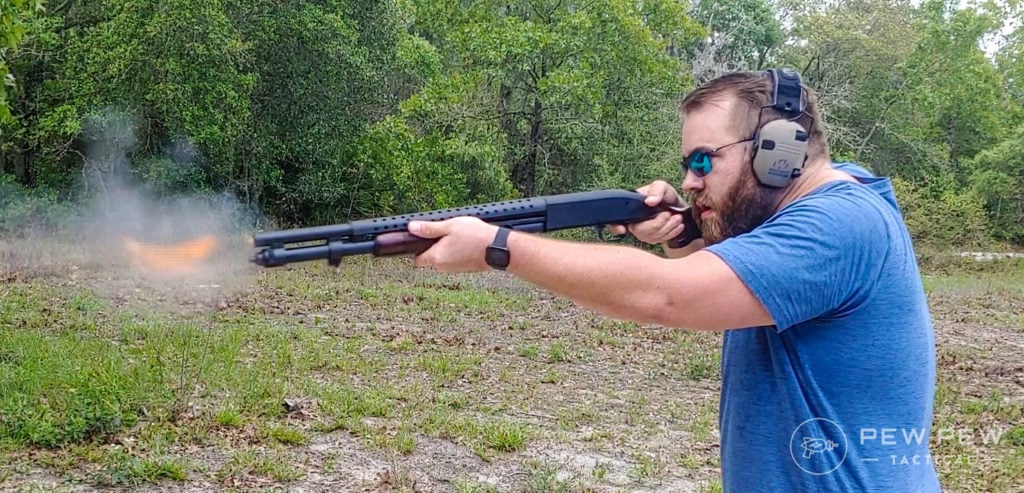
For this reason, the tightest pattern possible is desirable. This allows a shooter to extend their range and have top-tier pellet accountability. For inside the home, I pace off the furthest possible shot, and that’s where I begin to pattern.
I patterned with a Sage Dynamics target printed on 8.5 x 11-inch paper. I want every pellet inside that piece of paper at that max range. You can bet I check for consistency with more than three rounds and am perfectly willing to experiment with chokes for this task until I get it tight and consistent.

I pattern at the max range and then at 5 and 7 yards as well to ensure consistency at close ranges.
When I first patterned my Benelli M4, it strung Flitecontrol in a crazy unpredictable way. I checked the choke and discovered it shipped with an Improved choke, not a cylinder bore. A quick change to a cylinder choke tightened it up nicely.
For home defense, I suggest an 8-pellet buckshot. Nine pellet buckshot will often have a flyer in the mix that can be unpredictable. This occurs even with premium defensive loadings.
Speaking off, for home defense, I suggest 8-pellet 00 Flitecontrol, seconded by 8-pellet Hornady Critical Defense, 8-pellet Hornady Black, and then everything else.
Final Thoughts
Shotguns are a thinking man’s weapon, and patterning alone is a topic worthy of keeping a notebook on.
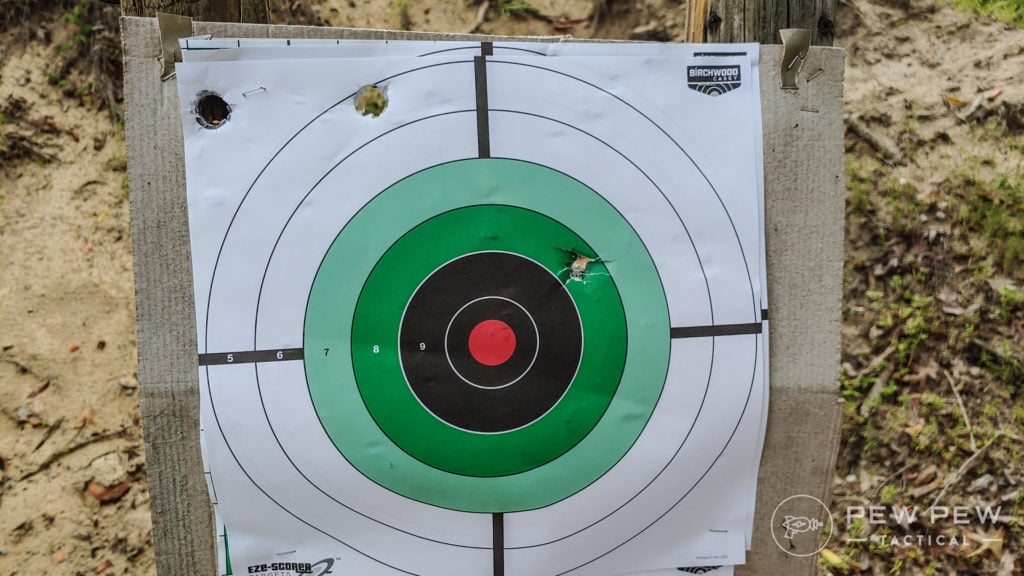
I’ve heard patterning described as tedious, but it’s always fascinated me. I love to experiment and see what kind of patterns I get from various loadings and through multiple chokes.
After all, patterning is the most critical component of being a good shotgunner.
What are your thoughts on patterning? Let me know in the comments below. Check out our guide to the Best Home Defense Shotguns.

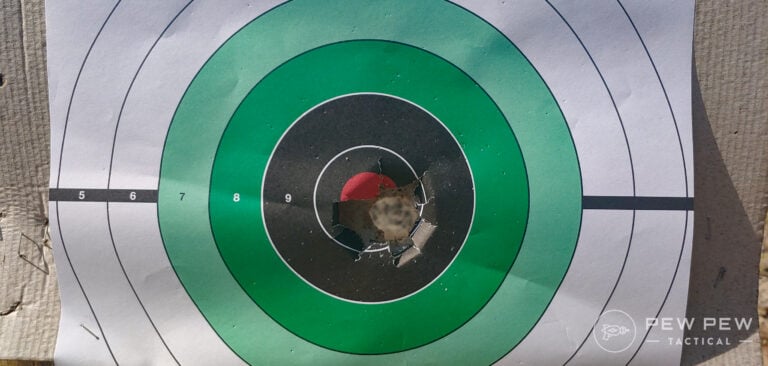









1 Leave a Reply
Hey Travis,
First, thank you for your service.
I’m new to shot guns, I received a Remington 870 tactical gun for Christmas and this article was very helpful for me and what I should be doing with it.
Patterning it never occurred to me. Guess I’ll be doing some range training and testing on it.
There are worse things to do besides that I guess. Looking forward to learning how it works though. Ken